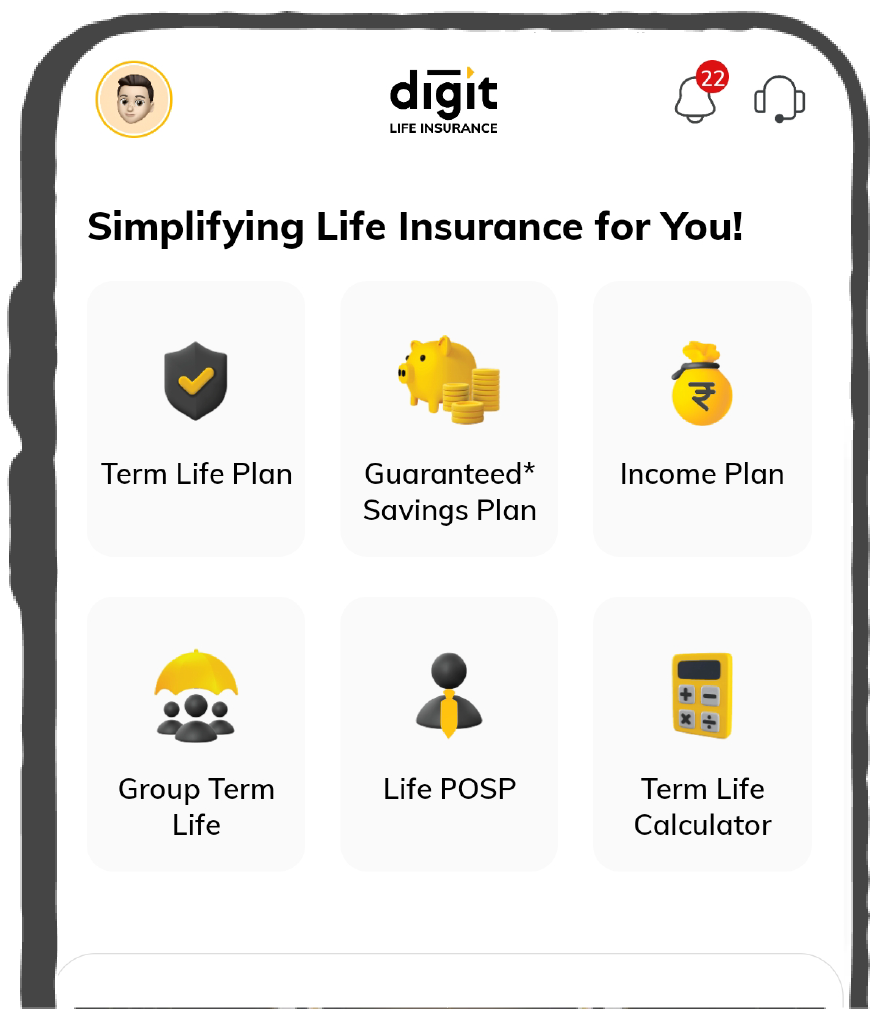Car Insurance Online, Up to 90% Off
9000+
Cashless Garages
96% Claim
Settlement Ratio
1.2 Cr+
Policies Sold
I agree to the Terms & Conditions
Buy Online for Huge Savings
How to Keep Your Driving Record Clean for Lower Car Insurance Rates?

Driving history is one of the most critical factors affecting premiums when sourcing motor insurance. The driving behaviour in the past will determine the risk one poses to the insurer. Therefore, individuals with a clean record will enjoy lower premiums, while those with a history of traffic violations or accidents will likely experience a significant increase.
One must always have sufficient motor insurance to tackle unforeseen circumstances, and a clean driving history is essential for excellent motor insurance. This article provides a comprehensive explanation of how driving history affects car insurance premiums. Read on and save more on your premiums.

Table of Contents

What is a Driving Record?
A driving record is a file that contains details about your driving life from the moment you started operating a vehicle. It details all the traffic violations you may have committed, including red light violations, overspeeding, improper overtaking, and not wearing a seatbelt.
It keeps track of the accidents and damages you caused to public and private property through your vehicle. Insurance companies use this driving record as a criterion to determine the amount of premium chargeable for a motor insurance policy. A driver with a clean record is charged less, while one with a history of violations or accidents pays.
How Does Driving Record Affect Car Insurance Premiums?
Insurance companies assess your past driving behaviour to gauge the level of risk you pose as a driver. Here's how different aspects of your driving history can impact your insurance costs:
Driver's Behaviour
Driving patterns are scrutinised, such as when the driver is off-lane, and sometimes the driving answers can be erratic. They ask how risky the risks are and how much automation results in higher charges.
Violations Severity
Minor offences, such as parking tickets, do not significantly impact these charges, while reckless driving does. A significant registered violation indicates to the insurance company that a future accident risk is very likely.
Inexperienced Drivers
Younger or novice drivers usually have higher premiums because they have no authentic driving record. This demographic is considered high-risk, but it can change when individuals display consistent and safe driving behaviour.
Mileage and Driving Habit
The distance driven and the frequency of long-distance driving are increasing risks of conversion to higher premiums. Insurers also consider the high risk of accidents associated with daily commutes during peak hours on roads.
Where You Drive
Geographic differences have shown that certain areas within the country experience more accidents than others, and these areas often have less stringent traffic regulations. This is also a significant factor influencing premiums, along with other factors.
Factors That Insurers Evaluate in Driving Records
Several factors are taken into consideration by insurers and insurance companies as part of an individual's driving record. A few of these factors have been listed below, which one must take care of:
Importance of Maintaining a Clean Driving Record
Maintaining a clean driving record is crucial because it has a significant impact on car insurance premiums. It is one of the first things the insurer will notice in your profile. Here are a few benefits of maintaining a clean driving record:
Lower Driving Costs
A clean driving record makes someone eligible for reduced car insurance premiums. Most insurance companies reward well-behaved drivers by providing discounted rates. Ultimately, it would suffice for a long time in terms of savings.
Improved Safety
Through safe driving, avoiding infractions, a person can demonstrate that they are sincere about safety. His record indicates a lower likelihood of accidents and injuries on the road, whether to himself or others. This generalises a safe trend in driving.
Peace of Mind
Maintaining a satisfactory driving record provides ease and assurance; driving is a relieving experience. There would be no penalties or higher premiums that would increase tensions. This keeps one focused while driving.
Professional Opportunities
Some positions invariably require clean driving records due to their various requirements for the necessary driving. According to employers, having a good driving record is similar to being responsible, as it may lead to further work opportunities.
Positive Profile
A clear driving record contributes to your profile. It conveys responsibility and can be utilised positively in both personal and professional situations where reliability is crucial. It also provides the insurer with assurance regarding your overall profile.
How to Check and Understand Your Driving Record?
Keeping track of your driving record is essential, especially when you need to secure better car insurance premiums. Here is a step-by-step guide on how one can check and understand one's driving record:
Step 1: Visit the Website
You can obtain driving record services by visiting the official website of your state's DMV or its equivalent regional transportation office. Confirm that you arrive at the actual site to avoid scams or disinformation.
Step 2: Log In with Your Details
To access your driving record, you must provide your driver's license number and other personal information. This verifies your identity and allows you to view your data.
Step 3: Apply for DL History at RTO
Go to your Regional Transport Office (RTO) and apply for a Driving License (DL) history. You get information like issues, dates, accidents, and any other violations present on it.
Step 4: Online Check for Offenses
Visit the official RTO website and enter the DL number to check the current status of traffic violations or challans. You can also pay online for outstanding traffic fines.
Step 5: Interpret and Understand
Details such as traffic violations, accidents, license suspensions, and event dates are displayed. Interpret violation codes with the help of a legend available on the website.
Step 6: Review Your Driving Record and Improve It
This driving record can serve as a tool to help you identify and improve your driving habits. A clean driving record indicates good, safe driving, which helps keep insurance premiums low.
Tips to Improve Your Driving Record
A clean driving record refers to having no traffic violations, accidents, or other infractions during a specified time frame. Here are a few tips on how one can improve their driving record:
Follow Traffic Rules
Limit the independent speed control, stop signs, traffic lights, and lane markings, and ensure that all roads are insured for safety. By consistently following traffic rules, you can reduce the chances of accidents.
Maintain a Safe Distance When Following
The "three-second rule" is a good idea to provide ample time if the front vehicle stops suddenly or makes a turn so that you can react to such surprising movement.
Be Aware of Lane Changes
Note in advance, check your mirrors, and change lanes only when you are sure and confident enough to ensure the lane change is safe. This is in addition to good lane discipline, which improves smooth traffic flow.
Avoid Distractions
Mobile phones should not be used or addressed while driving; other concentration-diverting activities, such as eating and drinking, should also be avoided. It's all directed toward avoiding speeding accidents and various road hazards.
Be Flexible with Weather Conditions
Flexibility allows for adjustments in driving style according to changing weather conditions. Slow down during rain or snow; switch on the headlights when visibility is compromised.
Routine Maintenance of the Vehicle
Regularly check the slit tyres' pressure, the battery's fluid levels, and the integrity of lights to keep the vehicle in an entirely running condition.
How Do Insurers Reward Safe Drivers?
Insurers typically reward safe drivers by offering them special discounts or incentives. This keeps the driver motivated to maintain a safe driving record. Here are a few of the rewards given:
Rewards Depending on Telematics
Many insurers offer motor-vehicle-insurance programs that utilise telematics equipment or a smartphone app to track the customer's driving behaviour, including speed, braking, and mileage.
No Claim Bonus (NCB)
No Claim Bonus in car insurance refers to rewards given to people who do not make claims within a particular insurance period, as they tend to accumulate over time to high levels.
Benefits of Low Mileage
For using the car to travel fewer total miles, discounts are likely to be offered in addition to the multiple rates applied to cover other factors that affect the insurance premium.
Customised Premium Discount
Insurance companies offer discounts on premiums for various practices that discourage night driving, excessive motor vehicle speed, and risk reduction for the insured.
Other Factors Affecting Car Insurance Premiums
The insurer or insurance company considers multiple factors before providing the vehicle owner with car insurance premiums. Here are a few other essential factors that affect the car insurance premiums:
Car Age
The car's value depreciates over time, which affects your premium. Newer cars have a relatively higher IDV, resulting in higher premiums. On the other hand, older cars are often more affordable for insurance.
Societal Laws and Regulations
Your insurance rates are influenced by local laws and regulations. In between, cities with more rigid regulations tend to have higher premiums, while more lenient laws and rates apply in the rural areas.
Credit Score
Most insurance companies consider your credit score when determining your premium. From the insurer's perspective, higher credit scores and lower risk result in lower insurance premiums.
Claims History
You may be affected by whatever claims you have made in the past when determining your premium. If you have made claims already, you will lose your eligibility for a No Claim Bonus.
How Do Insurers Use Technology to Assess Driving History?
Insurers are applying competitive technology to analyse data on driving history using telematics and data-driven tools. Telemetric devices are identified as those implemented in vehicles or accessed more sophisticatedly through mobile apps to collect driving behaviour, including speed, braking patterns, and distance travelled.
In addition to telematics, insurers use AI and machine learning to evaluate driving history and attempt to identify patterns that may indicate higher risks. All this research combines huge amounts of data, including traffic violations, accident history, and even weather conditions.















